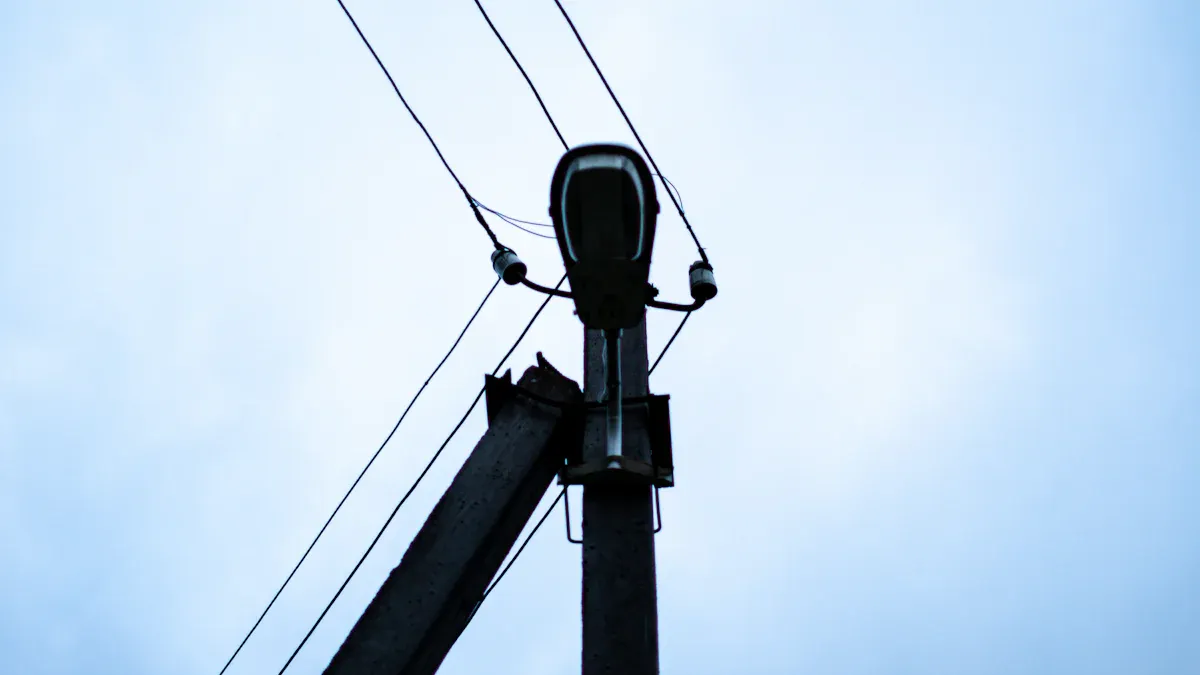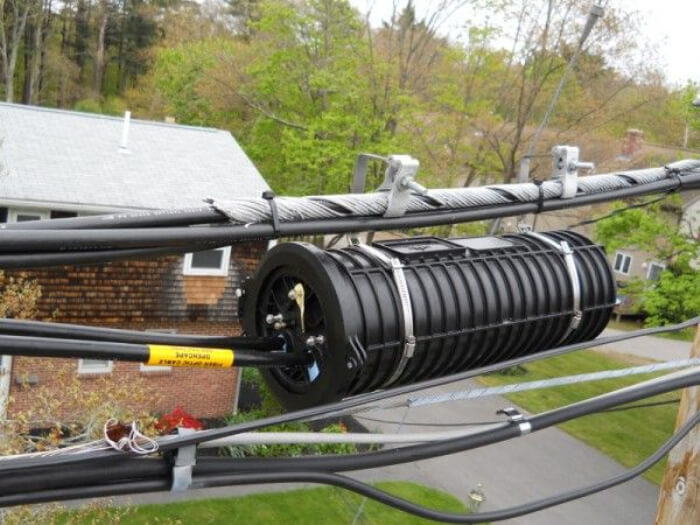Utility companies rely on Fiber Optic Splice Closures to deliver fast repairs and maintain stable service. These closures protect sensitive fiber connections from harsh environments. Their robust design supports swift, secure restoration of network function. Quick deployment reduces costly downtime, ensuring reliable communication for customers and critical infrastructure.
Key Takeaways
- Fiber optic splice closures protect delicate fiber connections from harsh weather and damage, ensuring stable and reliable network service.
- Their smart design allows quick access and easy repairs, helping utility companies reduce costly downtime and restore service fast.
- Using modular, weatherproof closures and following best practices like proper sealing and testing leads to longer-lasting networks and lower maintenance costs.
Fiber Optic Splice Closures: Function, Features, and Importance
What Are Fiber Optic Splice Closures?
Fiber optic splice closures serve as protective enclosures for fiber optic cable splices. Utility companies use these closures to shield sensitive fiber connections from environmental hazards such as moisture, dust, and extreme temperatures. Manufacturers construct these closures from high-strength plastics or stainless steel, ensuring durability and waterproof performance. Each closure contains a main body, splice trays for organizing fibers, sealing elements to keep out contaminants, cable glands for secure entry, and mounting brackets for installation. Sealing mechanisms like gels, gaskets, and pull-and-shrink tubing maintain the integrity of the internal splices. This robust construction allows for installation in aerial, underground, and indoor environments, making fiber optic splice closures a versatile solution for network protection.
Core Functions: Protection and Organization
Fiber optic splice closures play two critical roles in utility networks: protection and organization.
- They enclose fiber splices in a rugged, sealed housing, preventing damage from water, dust, and mechanical stress.
- Splice trays inside the closure keep fibers neatly organized, reducing the risk of tangling or breakage.
- Strain relief hardware secures cables, minimizing stress on the fibers during installation and maintenance.
- Service loops of excess fiber are stored inside or near the closure, allowing for easier future repairs or upgrades.
- Different closure types—such as dome, in-line, aerial, and pedestal—support various installation environments and cable entry needs.
- Proper cable preparation, grounding, and sealing ensure long-term network integrity.
Tip: Neat fiber management inside closures, especially dome types, simplifies re-entry and reduces the risk of fiber damage during network modifications.
Dowell, a leading provider in the industry, designs fiber optic splice closures that integrate advanced organization features. Their closures often include modular splice trays and patch panel adapters, enhancing both protection and cable management for utility networks.
Key Features for Rapid Repairs: Accessibility, Weatherproofing, and Modularity
Rapid repairs depend on the accessibility and design of fiber optic splice closures.
- Compression seal technology and O-ring sealing allow for easy assembly and watertight protection.
- Many closures require no specialized tools for installation or access, enabling technicians to work efficiently in the field.
- Mid-access designs let installers add closures over existing cables with minimal disturbance.
- Hinged splice trays, unibody storage baskets, and removable components improve access to spliced fibers, reducing repair time.
Weatherproofing stands as a crucial feature. Closures use durable outer shells, elastic rubber rings, and dome-shaped designs to protect against rain, snow, UV radiation, and physical damage. These features ensure that fiber connections remain intact and functional, even in harsh conditions. Industry standards such as IEC 61753 and IP68 ratings confirm their ability to withstand water, dust, and temperature extremes.
Modularity further accelerates repairs and upgrades. Modular closures support a wide range of fiber capacities and allow independent work on individual components. This design simplifies installation, maintenance, and network expansion. Dowell’s modular closures, for example, enable easy assembly, scalability, and compatibility with existing systems, making them a preferred choice for utility companies seeking efficient network management.
Why Speed Matters: Impact of Downtime and Need for Fast Response
Network downtime can have a severe financial impact on utility companies. According to the ITIC 2024 Hourly Cost of Downtime survey, large enterprises in the utilities sector face average downtime costs exceeding $5 million per hour. This high cost highlights the importance of rapid response and efficient repairs.
Fiber optic splice closures help minimize downtime by enabling quick access and streamlined repairs. Accessibility features—such as re-enterable housings, numbered port layouts, and easy-to-use connectors—reduce the complexity and duration of fieldwork. These closures also support fast troubleshooting and maintenance, even in challenging environments like aerial or underground installations.
Note: Fast, reliable repairs not only save money but also ensure continuous service for critical infrastructure and customers.
By choosing advanced fiber optic splice closures from trusted suppliers like Dowell, utility companies can maintain high network reliability, reduce repair times, and protect their bottom line.
Fiber Optic Splice Closures in Utility Operations

Real-World Scenarios: Emergency Repairs and Outage Response
Utility companies often face emergencies that threaten network stability. The Matanuska Telephone Association (MTA) in Alaska provides a notable example. After a 7.1 magnitude earthquake, MTA used fiber optic splice closures as part of its emergency restoration plan. These closures enabled rapid repairs for both aerial and underground cables. Proper sealing prevented water ingress and fiber stress, while OTDR testing verified restoration quality. This approach minimized network damage and restored service quickly. Compared to alternatives, breathable closures offer fast installation—typically within 45 minutes—and cost-effective protection for fusion splices. Their design reduces labor and speeds up outage response, making them ideal for urgent repairs.
Choosing the Right Fiber Optic Splice Closure: Durability, Capacity, and Compatibility
Selecting the right closure ensures long-term network reliability. Utility companies evaluate durability by choosing closures made from engineering plastics like ABS or PC, or high-strength aluminum alloy for outdoor use. These materials resist corrosion, aging, and impact. Sealing materials such as rubber and silicone provide waterproof and dustproof protection. Compliance with GR-771-CORE standards confirms environmental durability. Capacity and compatibility also matter. Closures must accommodate the required number of fibers and support various cable types and splicing methods. The table below compares two common closure types:
| Closure Type | Fiber Capacity | Ideal Applications | Advantages | Limitations |
|---|---|---|---|---|
| Horizontal (In-Line) | Up to 576 | Aerial, underground | High density, linear layout | Needs more space |
| Vertical (Dome) | Up to 288 | Pole-mounted, subsurface | Compact, water-deflecting design | Lower capacity than in-line |
Dowell offers closures that meet these criteria, ensuring compatibility and durability for diverse utility networks.
Best Practices for Fast Deployment and Maintenance
Efficient deployment starts with careful planning and site surveys. Technicians prepare cables, perform fusion splicing, and organize fibers in trays. Proper sealing with heat-shrink tubing or gel technology ensures environmental protection. OTDR testing verifies splice quality. Regular inspections and cleaning prevent contamination and maintain performance. Technician training, such as hands-on emergency restoration courses, reduces errors and speeds up repairs. Dowell supports these best practices by providing modular, user-friendly closures that simplify installation and maintenance.
Fiber Optic Splice Closures help utility companies minimize downtime and maintain reliable service.
- These closures feature modular designs, advanced weatherproofing, and high splice capacity, which support rapid, effective repairs.
| Advanced Feature | Benefit for Utilities |
|---|---|
| Modular Design | Faster repairs and easier upgrades |
| Improved Sealing | Fewer outages from environmental damage |
Utility companies that follow best practices report lower maintenance costs and longer closure lifespans.
FAQ
What is the typical lifespan of a fiber optic splice closure?
Most closures last 20 years or more. Manufacturers design them to withstand harsh weather, UV exposure, and physical stress.
Can technicians re-enter a closure for future repairs or upgrades?
Yes. Many closures feature re-enterable designs. Technicians can open them for maintenance, upgrades, or troubleshooting without damaging the internal fibers.
How do utility companies test the integrity of a splice closure after installation?
Technicians use OTDR (Optical Time Domain Reflectometer) testing. This tool checks for signal loss, confirming proper splicing and sealing.
By: Eric
Tel: +86 574 27877377
Mb: +86 13857874858
E-mail: henry@cn-ftth.com
Youtube: DOWELL
Pinterest: DOWELL
Facebook: DOWELL
Linkedin: DOWELL
Post time: Jul-21-2025

